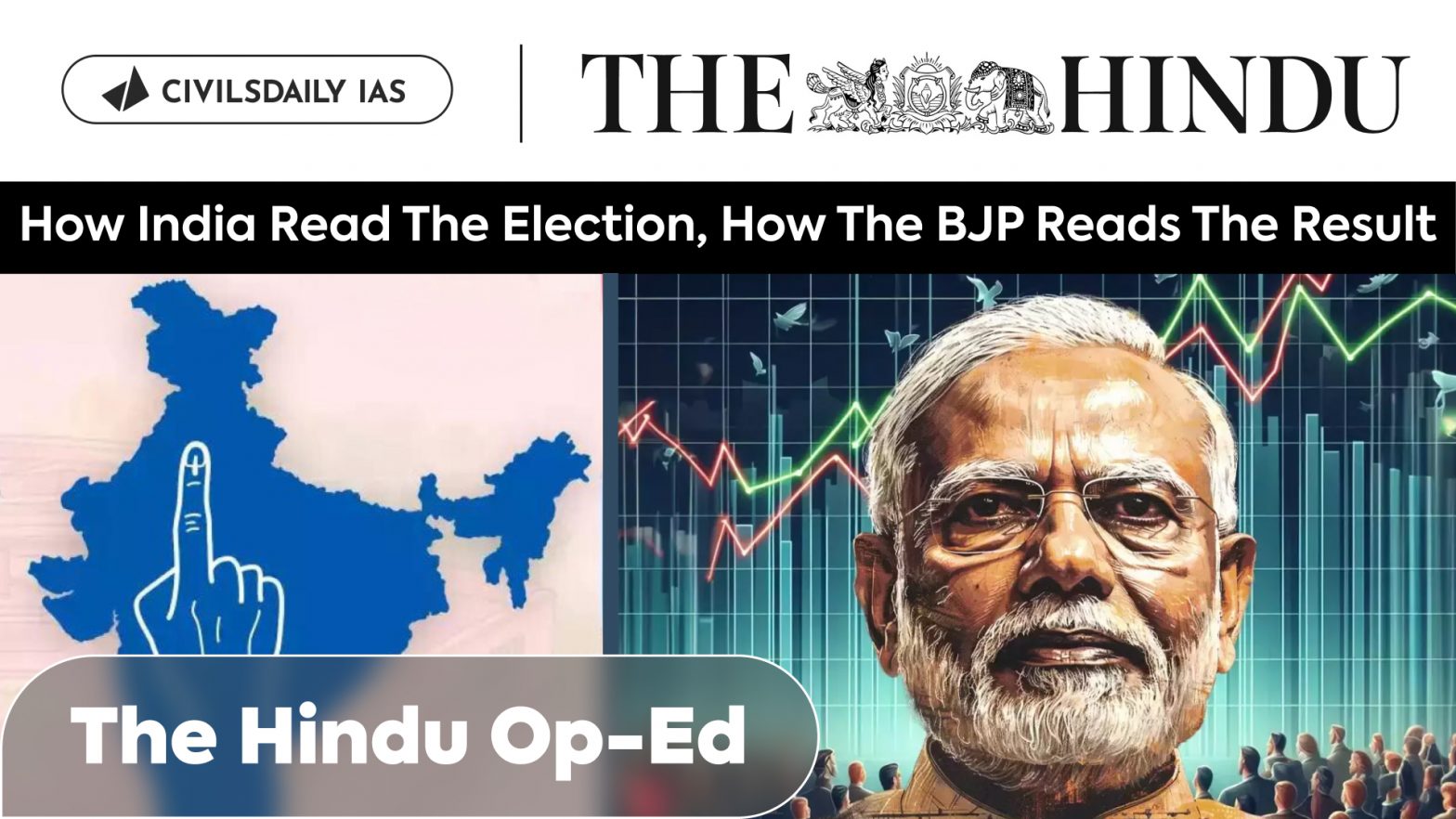| PYQ Relevance: Q “While the national political parties in India favour centralisation, the regional parties are in favour of State autonomy.” Comment. (UPSC IAS/2022) Q “The Indian party system is passing through a phase of transition which looks to be full of contradictions and paradoxes.” Discuss. (UPSC IAS/2016) |
Mentor’s Comment: The 2024 Indian general elections have been marked by significant political dynamics and raised critical concerns about democratic erosion. The ruling Bharatiya Janata Party (BJP), which once propagated the slogan ‘aayega toh Modi hi’ (in the end, Modi will come), shifted its narrative to ‘Abki baar 400 paar’ (this time, more than 400 seats). This shift symbolized not just an ambition for electoral victory but an assertion of near-total control, which has prompted widespread anxieties about the health of India’s democracy.
Let’s Learn–
Why in the news?
The concerns of the average voter shaped the 2024 election, and how the BJP responds to these concerns will be crucial.
Crossing the Red Line: Democratic Erosion
- Constructed Democratic Legitimacy: For years, the BJP has defended itself against accusations of democratic erosion by pointing to its electoral success. However, democratic legitimacy extends beyond merely winning elections, it hinges on conducting fair elections.
- Contentious Actions: In the run-up to the 2024 elections:
- Two Opposition Chief Ministers were jailed.
- Many Opposition leaders faced investigations or tax probes.
- The Election Commission of India (ECI) appeared partisan, not censuring the Prime Minister for violations of the Model Code of Conduct.
- Traditional media often ignored Opposition campaigns and concerns.
- Perception of Elections: This created a perception that elections were a foregone conclusion and performative.
| Equal Opportunity: Democratic Theories invoked • Robert Dahl’s View: Political theorist Robert Dahl emphasized the necessity for citizens to choose among all political actors and parties on equal footing. Equality of opportunity for all viewpoints is essential but often hard to measure. • Adam Przeworski’s Minimal Condition: Adam Przeworski noted that a minimal condition of democracy is plausible political alternation, where the ruling party occasionally loses. |
Voter Anxieties and Democratic Legitimacy
- Systemic Failures: Voters across India expressed concerns about systemic coercion and manipulation of institutions by the ruling party. In Uttar Pradesh, Dalit communities feared constitutional changes. In southern states, there were anxieties about the federal structure and linguistic identities. These issues reflect a broader sentiment of institutional overreach by the BJP.
- Media Control and Alternative Narratives: Traditional media’s reluctance to cover opposition campaigns led many voters to seek alternative narratives on social media. The overarching fear of a ‘tanaasahi’ (dictatorship) underscored the public’s discomfort with the BJP’s unbridled use of power.
Electoral Dynamics and Opposition Strategy
- Harnessing Voter Discontent: Despite the BJP’s dominance, the opposition effectively harnessed voter discontent. The campaign against electronic voting machine (EVM) manipulation, regardless of its factual basis, gained traction in rural areas, highlighting a significant mistrust in the electoral process.
- The Battle for the Constitution: The opposition framed the election as a battle for the Constitution, resonating with voters concerned about democratic erosion. This narrative forced the BJP to reassure the electorate about not changing the Constitution, indicating that bottom-up feedback mechanisms were still influential.
Implications for Governance and Democratic Accountability
- The Role of Protests: Protests like those against the Citizenship (Amendment) Act and the farmers’ movement indicated a shift in how citizens exert democratic pressure. These movements succeeded outside formal political processes, demonstrating the erosion of traditional democratic institutions’ legitimacy.
- The Path Forward: The BJP remains the largest party and is likely to form the government again. The critical question is whether it will continue its path of political centralization or heed the limits set by the electorate. Ignoring these limits could lead to new forms of resistance outside traditional democratic institutions.
Conclusion: The 2024 elections have underscored the complexities of democratic erosion in India. Addressing these challenges requires reinforcing fair electoral processes and ensuring equitable opportunities for all political actors. The interplay between political centralization and citizen resistance will shape the future of India’s democratic trajectory, demanding a nuanced approach to governance that respects democratic principles and public accountability.

